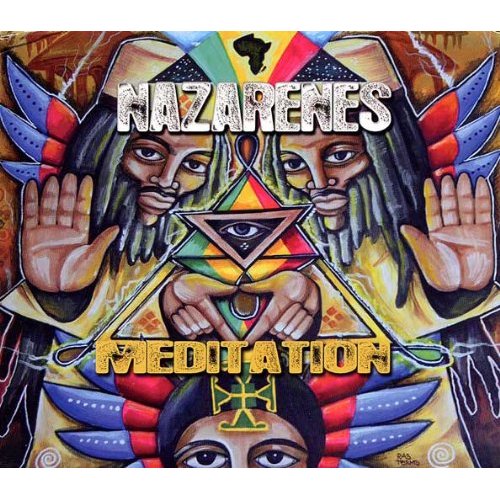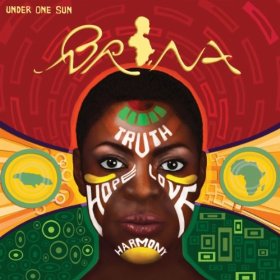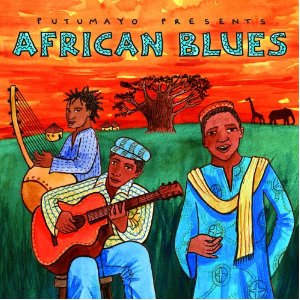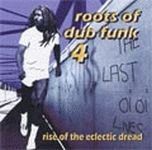 Various: roots of dub funk 4: rise of the eclectic dread, Tanty Records, 2004
Various: roots of dub funk 4: rise of the eclectic dread, Tanty Records, 2004
Rating: A
This is a delightful oddity–not quite amateur night at the reggae Dub Club, but almost. Hopeful dublicators from practically all over the world, including some established pros, had apparently sent their best efforts to Tanty Records to try to make the “next installment” of a series of dub disks. Fourteen of those best efforts made the final cut and roots of dub funk 4 is the result.
The UK’s Jah Warrior, a proven source of contemporary dub, has two offerings: the disk opener has an up-tempo rhythm and busy percussion that are in some sweet kind of tension with the jazzy and nonchalant sax delivering the melody; the second Jah Warrior piece uses a simple horn riff as an excuse for its organized clamor–the rattling, clacking, bongo-ing type of clamor that I enjoy. No More Babylon, from France, presents a steady drum and bass with splintered vocals and an interesting electronic layer from which a tune almost emerges. Social Living Sound gives us a reflective melodica tune atop nicely balanced dub elements, mixing fun with moodiness. Dub Master Rico starts in a far eastern mode but introduces several surprising changes along his rhythmic way. Peyote Sound System’s track has a gung-ho rhythm with lots of weird stuff that gradually become grounded in recognizable instruments, including horn section.
The dynamic Dub Funk Association keeps us bopping, but I’m intrigued by the soft, unobtrusive vocal always there at the edge of the sound. An orchestral horn overture might make you think DJ Perch of Germany is into classical music, but nope, it’s definitely reggae-based dub with a prominent beat and occasional fragile vocal. Cosmic Rocker and Zeb, in their turn at bat, allow lots of space and time to contemplate their evocative electronic bird calls, and Doctah X prescribes some Jimi Hendrix guitar growls and feedback along with a disembodied vocal. The closest we come to an actual song is by Mystic Vibrations; it has a melody and large chunks of vocal. Solid nyahbinghi drumming fortunately keeps The Interruptor’s spacey, tuneful homage to Mother Africa from floating away, while Piano B’s “Dub My Roots” is subtle and highly experimental, owing almost as much to John Cage as to King Tubby. Humble Band from Mali closes the show with a more traditional approach, dubbing up a rocksteady-style organ tune.
I suspect that not all the submissions to Tanty were absolutely great, but these 14 surely are. It’s an eclectic collection, as promised in the subtitle, and proof beyond any reasonable doubt that dubiosity is alive and kicking, all over the world.
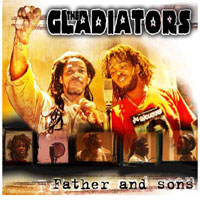 The Gladiators: Father and Sons, RAS, 2004
The Gladiators: Father and Sons, RAS, 2004
Rating: A-
As an evocation of the good old days of roots reggae, this album gets an A+. Given that Albert Griffiths wrote all the songs and sang lead on most, that solid roots temperament is not surprising. He’s one of the true stalwarts of reggae and an original member of one of its prime harmony trios, The Gladiators. This present line-up isn’t quite the same group, lacking the formidable talents of Clinton Fearon, but it does include the third original member, Gallimore Sutherland, singing backup.
As an artistic statement in the here and now, however, Father and Sons plays it just a bit too safe to merit the very highest rating. I also assigned a demerit point for the rather annoying (but also slightly charming) squeakiness of Al Griffiths’ lead vocal on several tracks. Al is one of the sons of the album’s title; the other shows up on drums.
But there is much to praise about this disk. First, it’s a generous hour of music, including four dubs. Second, Albert’s vocal skills and confidence make his lead a joy to listen to. Third, Dean Fraser arranged the horns. Next, most of the songs are beautifully crafted, a return to more melodious times. Next, the rhythms are strong and tight. The doowop harmonies in “Attack” are a great touch, as are the nimble wah-wah guitar in “Can’t Get Around” and the easy-going rocksteady bass line of “Bull Buck.” The pretty melody of “Captivity” sounds to be based on a protestant hymn, and it works well.
Despite its reggae beat, “Holding On” is essentially a 1950’s style rock’n’roll love song–in its tune, lyrics (“we’ll be together/birds of one feather”), and overall feel. Soulful horns and subdued electric guitar support a tender vocal in the gorgeous ballad, “Farewell” (“How soon I would turn/To hold you once more back in my arms”). Hardly reggae at all, it’s more like a smoochy last dance from 40-odd years ago.
Given all that preceded it, the lyrics of the final track, sung over a shuffling one-drop rhythm, seem very fitting. Not so much this naivety: “What we need is love, sweet love,” but this nostalgia: “We want to see the good old days come back again.” Well, for a generally very pleasant hour, those days have. But do we really want them around forever?
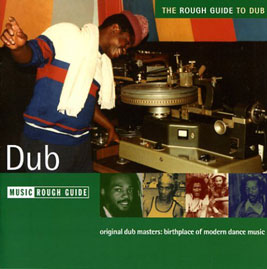 Various: The Rough Guide to Dub, World Music Network, 2005
Various: The Rough Guide to Dub, World Music Network, 2005
Rating: A-
If you were to buy a book entitled, oh, say “Rough Guide to Baffin Island,” you might expect to become informed about pretty much the whole of Baffin Island. On the other hand, if the title were “Rough Guide to Just One Part of Baffin Island, but a Very Significant Part,” then you’d expect the scope to be more restricted, which might affect your decision to buy.
That’s why you should take note of the two-part sub-title of The Rough Guide to Dub. Read carefully now: “original dub masters: birthplace of modern dance music.” See, it’s not the whole Baffin Island, is it? No, it isn’t. To quote the liner notes: “This compilation attempts to portray the original impetus of the form, as developed principally by the original dubmaster King Tubby during dub’s first Golden Age (1973-1979), although we have also included mixes by some of his competitors and contemporaries.”
That’s why you won’t find in this Guide any mini-maps to the byways of contemporary urban techno-jungle-dub or any lists of “Where to find live dub in Iqaluit” or sidebar articles on Jah Shaka’s role in the dubvelopment of Frobisher Bay. Nope, not even any aural counterparts to those things. What you will find is over an hour’s worth of great King Tubby-style dub.
Given Tubby’s adventurous nature and the general risk-taking of the genre, there’s good variety in the selections and lots to listen for, including a thunderstorm; some bits and pieces of honking harmonica; a step-by-step lesson in how to create and/or enjoy dub (“listen to the bass; mek a girl a move her waist”); vocal snippets by Dennis Brown, Larry Marshall and others; the water-soaked ambience of a Lee Perry production; interjections by deejay Jah Walton promoting “rockers rub-a-dub style,” and an array of studio fun and trickery.
By sheer coincidence, as well as being a guide to (some) dub, this could also act as a “Best of Blood and Fire” compilation: all the tracks but one are taken from previous albums on the Blood and Fire label. For dub fanatics of the “deep roots reggae” sub-category, that’s a warning: you may already be familiar with this part of the Island. If you’re not, or if you simply want to explore it again, then this Guide is just what you need.
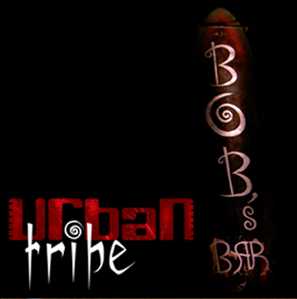 Urban Tribe: Bob’s Bar, Adam Atterby Musikproduktion, 2005
Urban Tribe: Bob’s Bar, Adam Atterby Musikproduktion, 2005
Rating: B+
A reggae album named Bob’s Bar. A cover tune with lyrics that say, “I’ll meet you down at Bob’s Bar on the island in the sun.” Has to be a reference to Bob Marley and a metaphor for the atmosphere of Jamaica, right? Wrong. It’s an actual bar in Thailand, at least it was before being destroyed by the tsunamis in December 2004.
This song and many of the others offer a definite step up from the usual concerns and lyrics of much contemporary reggae. Not all the words are special, mind you, but enough are that you have to take note and say, “Jah bless.” For every derivative line like, “Wanna be a soul rebel/Gotta be a soul rebel,” there are half a dozen memorable lines such as this: “But the years kept passing/Nothing’s everlasting/I’m still trying to find my way back home.” Both of those examples are from the same tune.
Try this: “The fool is loose and running free/A blind man shooting at the world.” Those words come from the highly political lead-off song called “Fool with a Gun,” which expertly balances the particular (we all know who the “fool”is) with the universal (it becomes a broad condemnation of violence). Now consider this: “Silver and gold/Won’t keep you warm when the wind blows cold&/won’t keep you young when you’re growing old.” Notice the directness and utter lack of pretention in these lines: “Looking in the mirror I see/A face looking back at me/Marked by the stress of the everyday grind.”
On to the music. It’s worthy of the lyrics. Rootsy, rhythmic, extremely tuneful and nicely seasoned with guitar solos, keyboard solos and occasional toasts from Bamma B. The strong lead vocals are balanced by sweet harmony background voices. The tempos and arrangements are well varied.
On to the packaging. This would be impressive even if it weren’t an independent release: it has a thick, glossy, full cover booklet with all the lyrics, full credits, and even the story of Bob’s Bar in Thailand.
That just about covers the territory: words, music and presentation combine to make a great reggae album. Oh yeah, one more thing: Urban Tribe is from Sweden.
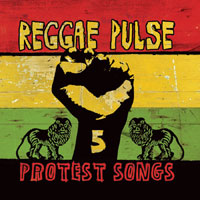 Various: Reggae Pulse 5: Protest Songs, Trojan, 2005
Various: Reggae Pulse 5: Protest Songs, Trojan, 2005
Rating: B
I protest! I demand a better world, and one of the things I demand, somewhere after equal rights and justice, is CD compilations that aren’t restricted by licensing agreements, space limitations, or lack of imagination.
But something’s happening here, and what it is, is exactly clear. Compilations have to be cost-efficient, practical and marketable. Thus Reggae Pulse 5: Protest Songs includes wonderful, classic, easily acquired reggae tracks like Beres Hammond’s “Putting Up Resistance,” Delroy Wilson’s “Better Must Come,” Israel Vibration’s “The Same Song,” Junior Reid’s “One Blood,” Peter Tosh’s version of “Get Up Stand Up” and a bunch of others. It’s a good variety of great music. The downside is that if you’re a true reggae fan you may well have all these on your shelf already.
Faced with this problem, the compiler must have said to himself, “We shall overcome,” and decided to record some brand new tracks by Luciano, Freddie McGregor, Bushman, Yvad and Don Carlos. But rather than composing new songs, these highly talented artists were assigned covers instead, and oh, the lack of imagination! Anyone familiar with the music of the 60s can guess the famous protest songs if I name the original artists: Barry McGuire, Buffalo Springfield, Buffy Saint-Marie, Bob Dylan. Great songs all, competently covered. (It’s too bad that Derrick Harriott’s moving reggae version of a song from the same era, The Temptations’ “Message from a Black Man,” isn’t here: he did it years ago and it’s superior to all of these.)
However, there’s so much trouble in the world now, right now, yet Steel Pulse delivers the only new tune in the whole collection, about weapons of mass destruction. Where is the musical condemnation of the tyrannical regime in Zimbabwe or the horror in Sudan? Does no-one care that the Bush gang is pushing the USA into bankruptcy? The liner notes claim (incorrectly) that songs of social protest began with the blues standards of the 1930s–well, where’s the reggae version of one of those? Where is the cover of “Strange Fruit,” the most powerful protest song ever? Where are the dub poets? Not there, not there, not there.
The answers, I guess, are blowin’ in the wind. It’s a good album, but I still protest.
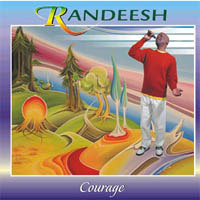 Randeesh: Courage, Mountain Lion Records, 2004
Randeesh: Courage, Mountain Lion Records, 2004
Rating: B
Wow, this guy Randeesh is direct. He’s not interested in gussying up his performance, or his songwriting either. Think of a folkie singing at a campfire, probably mid-evening, after the silliness but before things get too emotional. Think story-telling time. Think of a gifted child singing honest, unassuming songs. Think of the exact opposite of American Idol’s grandiose, I’m-out-to-impress dramatics.
Randeesh is from the Caribbean area, specifically Belize, which perhaps accounts for the reggae in his soul (and most of his repertoire), but he now lives on the vast west coast of Canada, uncrowded except for trees. Perhaps that accounts for all the space between the words when he sings. He has a serviceable voice, but it’s not strong or supple, and his phrasing is rather unadventurous, part of his directness. Randeesh’s lyrics tend to the simple and unsophisticated, edging awfully close to preachiness at times: “Why don’t we shine our light all over the world,” for example–he only gets away with that because he’s so darned sincere.
I don’t want to give the wrong impression; this is not just a guy’s naked voice and acoustic guitar. There is lively instrumentation, in fact, including electric guitar and horns, some decoration here and there in the form of female background singers (notably chanting a shoo-be-oop I-Three style accompaniment in a Bob Marley tribute), and even some electronically enhanced textures. A dancehall rhythm enlivens the title track, although the vocal is gentle. “I Look to the Mountain” is funky, with an interesting call and response structure in the vocal, and “Have to Try” has a bouncy rhythm with a supremely catchy sing-along refrain.
The last two tracks on the disk successfully expand the rhythmic horizons. Both feature the traditional “boom and shine” Belize rhythm, to my ears a busy and pleasing combination of reggae, nyahbinghi and Bo Diddley beats, all ratcheted up a notch in speed. The first of these is my favorite, but the second has a very friendly acoustic guitar solo, so it’s not far behind.
That’s Randeesh. Direct and unadulterated, if not quite unadorned. Fifty minutes of antidote to American Idol. Go for it.
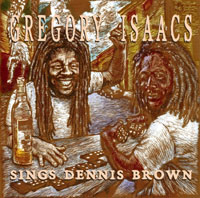 Gregory Isaacs: Sings Dennis Brown, RAS, 2004
Gregory Isaacs: Sings Dennis Brown, RAS, 2004
Rating: B-
You may wonder what the point is with this album: one reggae star singing songs written, performed and made famous by another reggae star. Would it help to know that a few years ago Brown did the same to Isaac’s songs? Or maybe that just begs the question.
You may even wonder if there’s much point in Isaacs recording another album, period. This is his usual impeccable phrasing and seductive, laid-back, Mr. Pitiful croon over synthesized rhythms and serviceable, unimaginative accompaniment. Add familiar tunes, unexciting packaging and minimal liner notes, and you wonder how much work went into this and why we should bother with it. (One element shows effort, and that’s the fun cover illustration, a faux woodcut of Brown and Isaacs playing dominoes.)
But let’s pretend for a few moments that the nonchalance of the whole thing is merely ultra-cool professionalism. Let’s see what we’ve got. Isaacs’ vocal is the ideal vehicle for the first track: you have to believe him when he whimpers that “no man is an island.” In the next tune an incessant computerized rhythm lends inevitability to lines like “I’ll be taking the train/I’ll be taking the westbound train,” and there’s some subtle instrumentation here too. The quick-stepping beat of “Money in my Pocket,” though, is too aggressively buoyant for lyrics that combine financial hardship and emotional heartache. Although track 4’s rhythm is somewhat more subdued, it is still too jaunty for its words: “wolves and leopards are trying to kill the sheep and the shepherd.”
Fortunately, “Inseparable” gets a more sympathetic (if kind of hoaky) arrangement, and the tuneful “How Could I Leave” is a real highlight with its wood-clomping beat. My other favorite is “The Prophet Rides Again,” where Isaacs makes the most of the tune by knowing how not to rush. The album closer, “Tribulation,” has perfect piano accompaniment and a beautiful, pleading vocal, but its intended down-to-earth humanity is defeated by the annoyingly automatic rhythm.
Partly successful, partly not. Partly enjoyable, partly not. There’s a lesson in this disk: a great singer singing great songs isn’t necessarily enough. With a bit more work on the arrangements, a bit more attention to detail and a bit less smooth sailing, we would never have thought to ask, “What’s the point?”
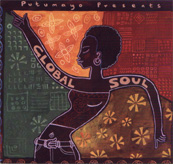 Various: Global Soul, Putumayo World Music, 2003
Various: Global Soul, Putumayo World Music, 2003
Rating: C
A few seconds into my first hearing of the first tune on this compilation, I felt a grimace coming on, one that over the next minute became full-fledged. I shook my head. Why would anybody begin an album called Global Soul with something so soulless? And why is the sound so generic? Where in the world (literally) did it come from? I looked at the liner notes and was not surprised at the answer, France.
Oh well, on to the second track. A strong bass and drum combo, engaged singing, some moaning and rapping. Well, this is better, I thought, wondering where it came from. Surprise–it was South Korea.
I started a guessing game with myself. The game was “guess the country of origin,” and track 3 was my first test. It was a light, tongue-twister of a song, kinda funky. I gave up; it turned out to be Brazil. Track 4 built slowly, slightly menacingly; the French lyrics were mostly spoken; the background became orchestral. I liked it. Quebec, I wondered? Nope, France. Track 5 was questionable until the female vocal started; it was elegant, understated, abundantly soulful, as alluring as the melody and obviously African. Yes indeed: Cameroon.
I continued my game. The African riff and lead vocal of track 6 turned out to be Tanzanian. The disorganized sound beginning track 7 coalesced into a slick beat and unconvincing female vocal, the arrangement confirming lack of credibility. I correctly guessed France. The heavily synthesized track 8 had a steady easy beat, female voices singing backup and a rap about ancestors, including crosses burning. I had to think USA; I checked, it was “USA/UK.” Just then my fingers slipped and I saw that next track was Brazilian. I wouldn’t have known: laid-back, unexcited, uninvolved female vocal over a dance beat. Yawn. The strong African elements won over the American R&B influences on track 10: Senegal. Then came a gentle mbira, shuffling rhythm, generic horn chart, and jazzy female vocal lead; I guessed Zimbabwe or South Africa: it was “Germany/South Africa.”
The smooth, quick rap of Track 12, in one of the Romance languages, lacked soul, but by now I half expected that. The engaging Manu Chao influences offered few real clues, so I gave up. It was–Italy! Okay, final track. Is that Greek instrumentation? Lebanese? The lyrics are French. Horns, gypsy-like yelps, gospel backing voices–too many influences to determine origin–oh, Canada.
Global Soul claims to be “A collection of contemporary soul and R&B from around the world.” If you think ten countries is sufficiently global, that soulfulness is an optional extra in soul music, that the B in R&B must stand for “business,” and that “around the world” means it could come from anywhere, you might like this. Half of it is genuinely musical, and you can guess at the rest.



